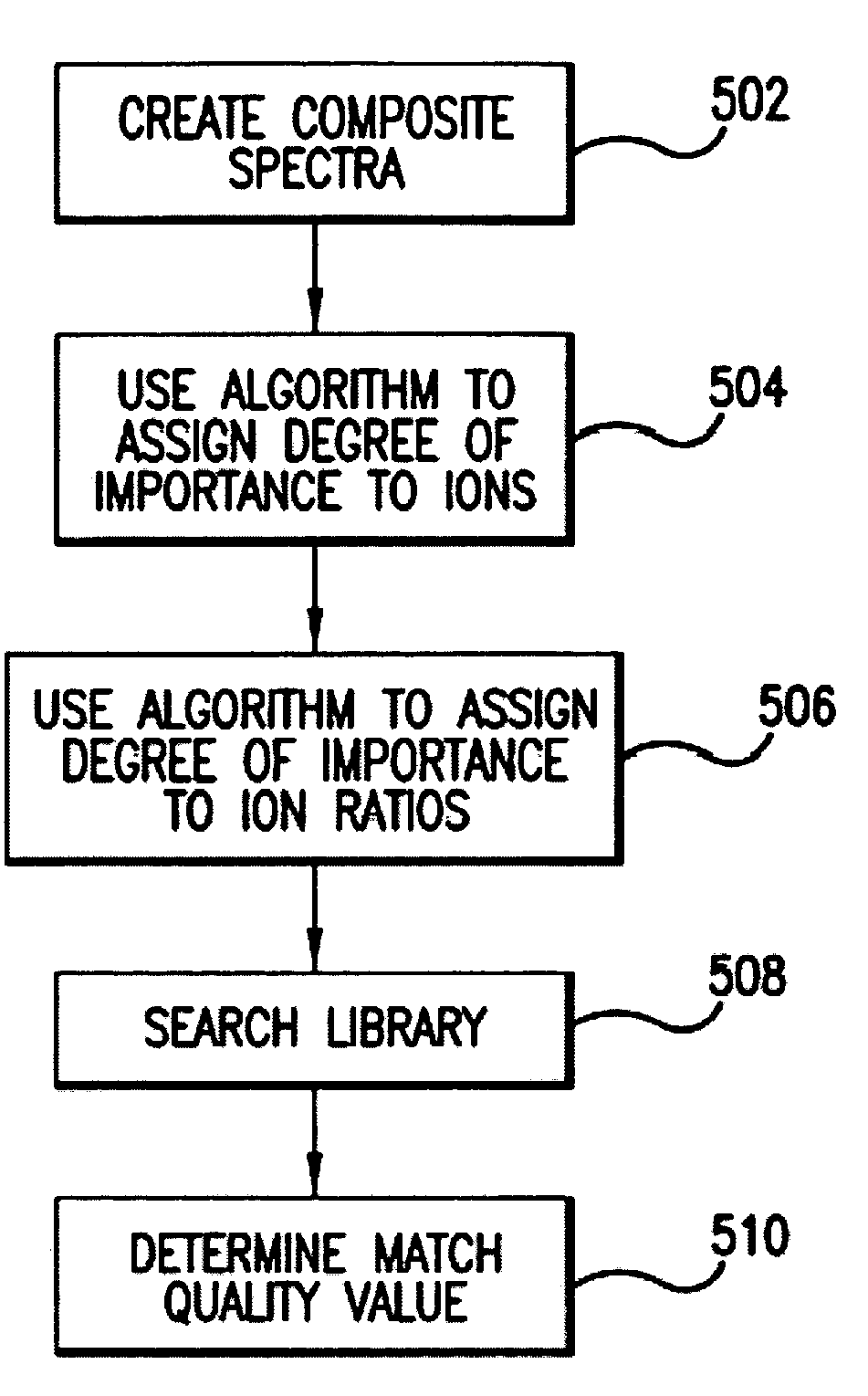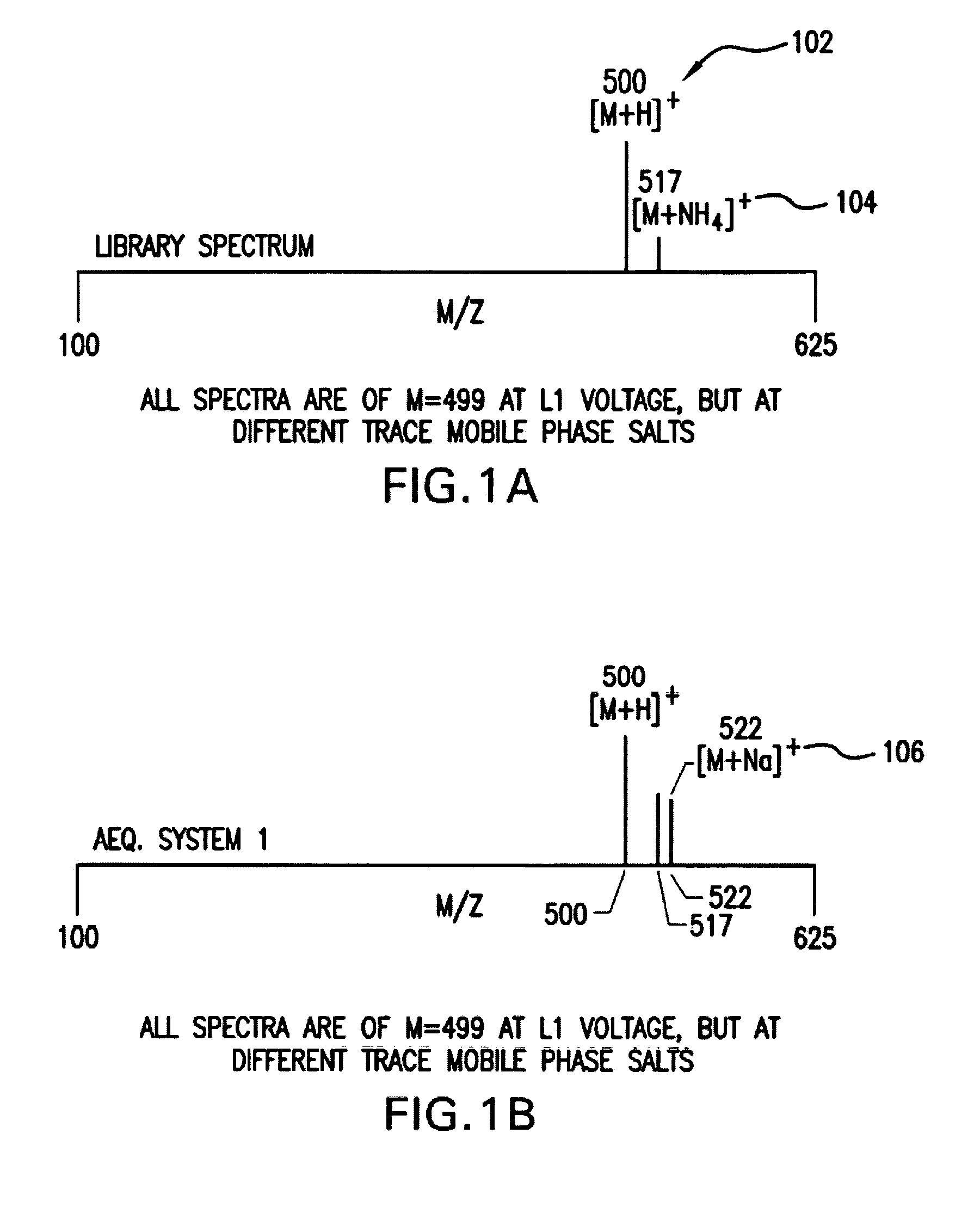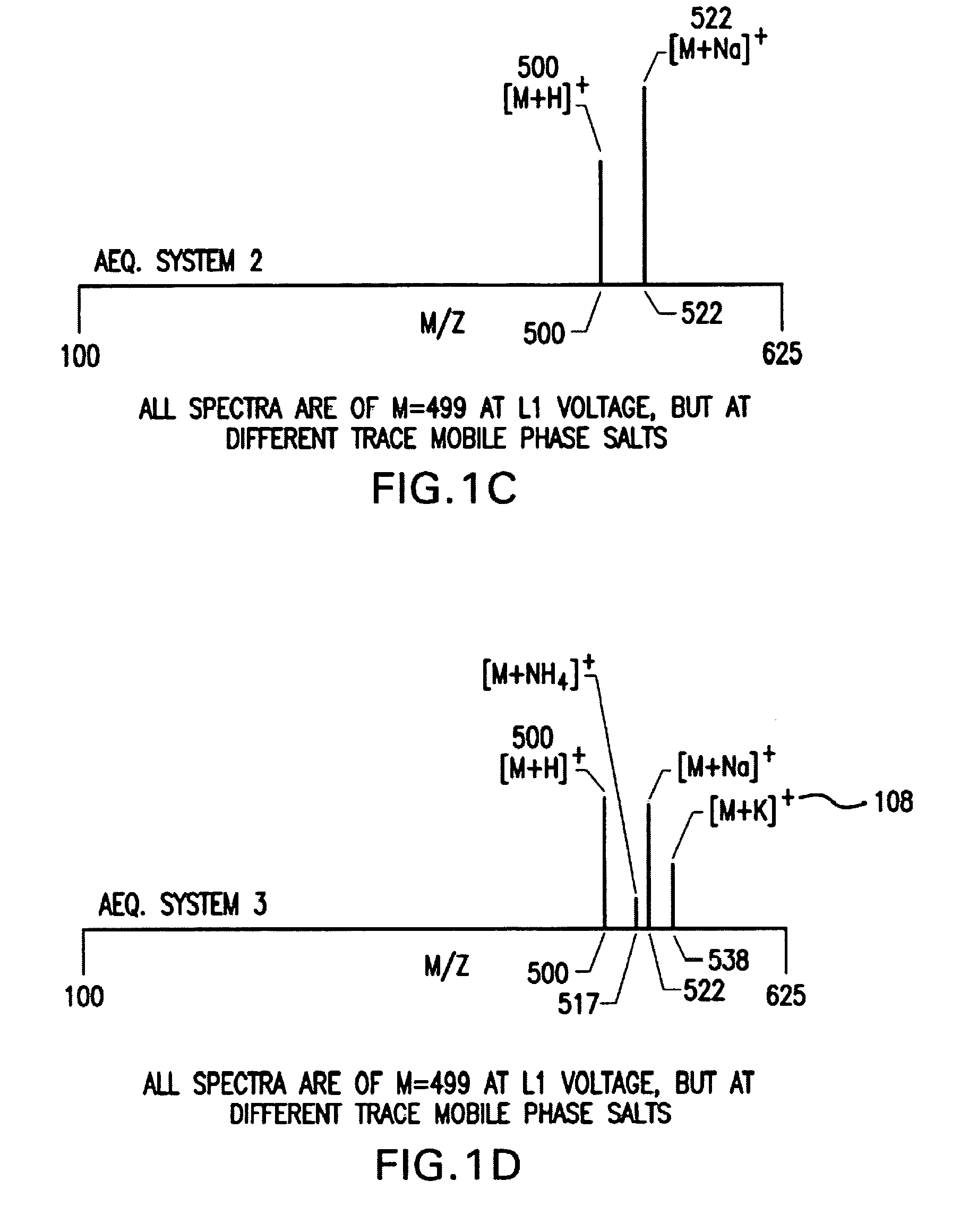Dynamic library searching
a library and dynamic technology, applied in the field of mass spectrometry identification of compounds, can solve the problems of large, inability to detect the presence of a library, so as to achieve the effect of reducing spectra and more reliable library searching
- Summary
- Abstract
- Description
- Claims
- Application Information
AI Technical Summary
Benefits of technology
Problems solved by technology
Method used
Image
Examples
Embodiment Construction
[0022]The present invention is a system and methodology utilized to improve reference libraries and searching of reference libraries associated with mass spectrometers. In a liquid chromatograph-mass spectrometer (LC-MS), an unknown compound is received in liquid form in a mass spectrometer and analyzed. The unknown compound may be injected into the mass spectrometer using atmospheric pressure ionization (API). Usually, API returns a spectrum showing a single spectral peak for the pseudo molecular ion. The unknown compound may additionally or alternatively be injected using collision induced dissociation (CID), which fragments the single ion. CID may be used to produce one or more product ions, which may or may not include the parent molecular ion. Fragmentation occurs at different energies for different ions.
[0023]In order to produce spectra showing more than a single spectral peak, which represents the molecular ion, the unknown compound may be injected multiple times into the mas...
PUM
| Property | Measurement | Unit |
|---|---|---|
| spectra | aaaaa | aaaaa |
| mass spectrometer | aaaaa | aaaaa |
| collision energy | aaaaa | aaaaa |
Abstract
Description
Claims
Application Information
 Login to View More
Login to View More - R&D
- Intellectual Property
- Life Sciences
- Materials
- Tech Scout
- Unparalleled Data Quality
- Higher Quality Content
- 60% Fewer Hallucinations
Browse by: Latest US Patents, China's latest patents, Technical Efficacy Thesaurus, Application Domain, Technology Topic, Popular Technical Reports.
© 2025 PatSnap. All rights reserved.Legal|Privacy policy|Modern Slavery Act Transparency Statement|Sitemap|About US| Contact US: help@patsnap.com



